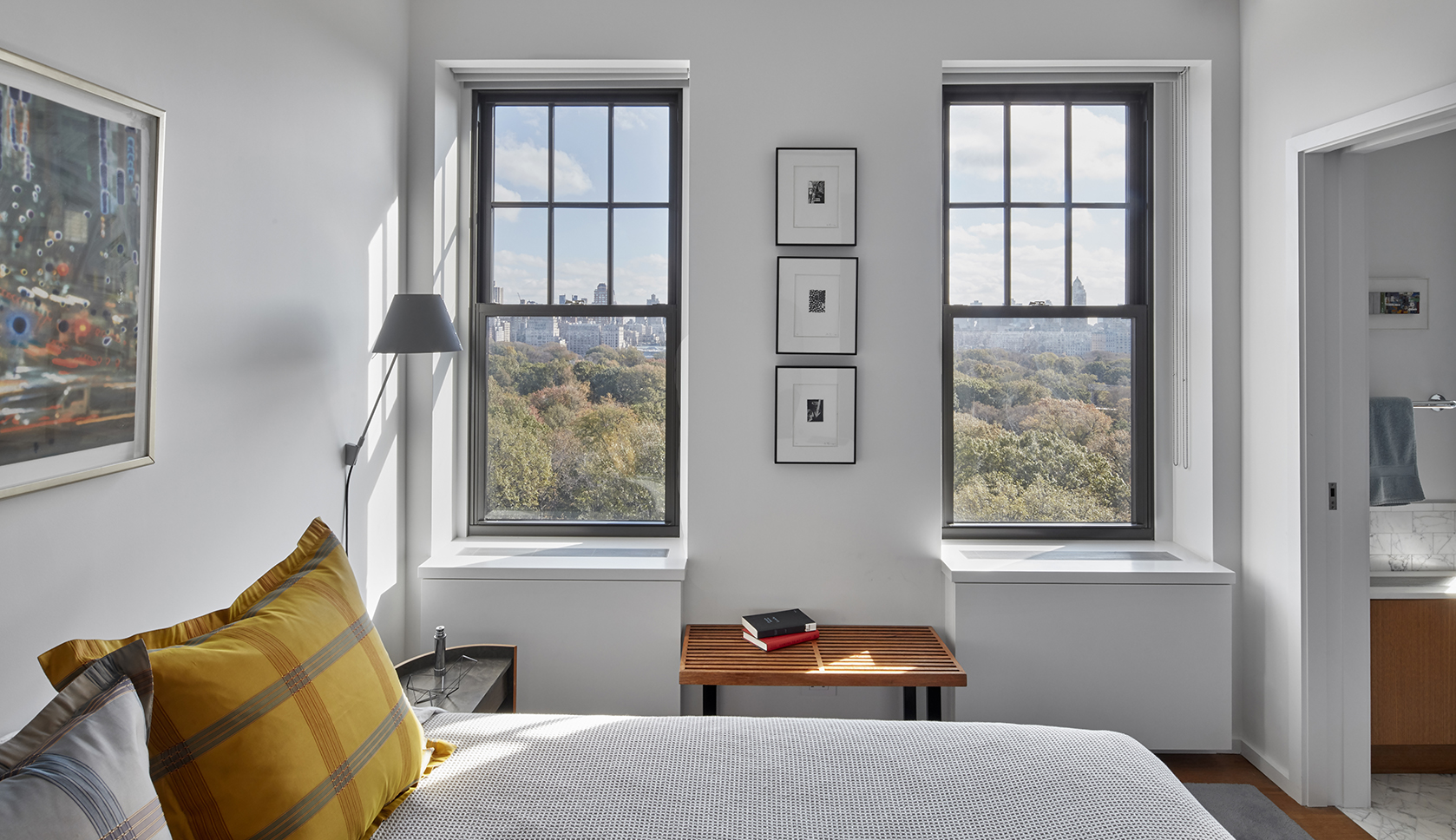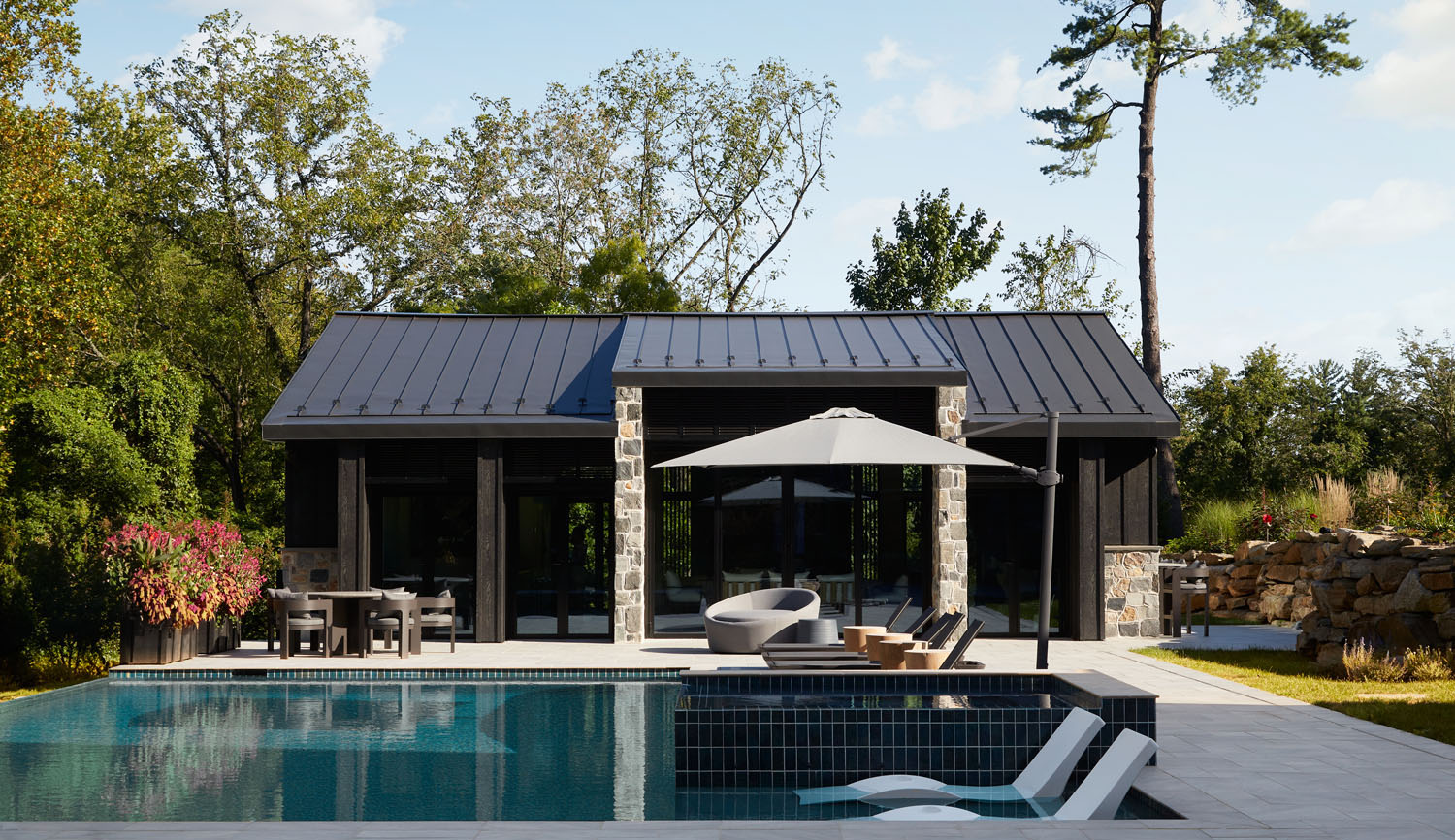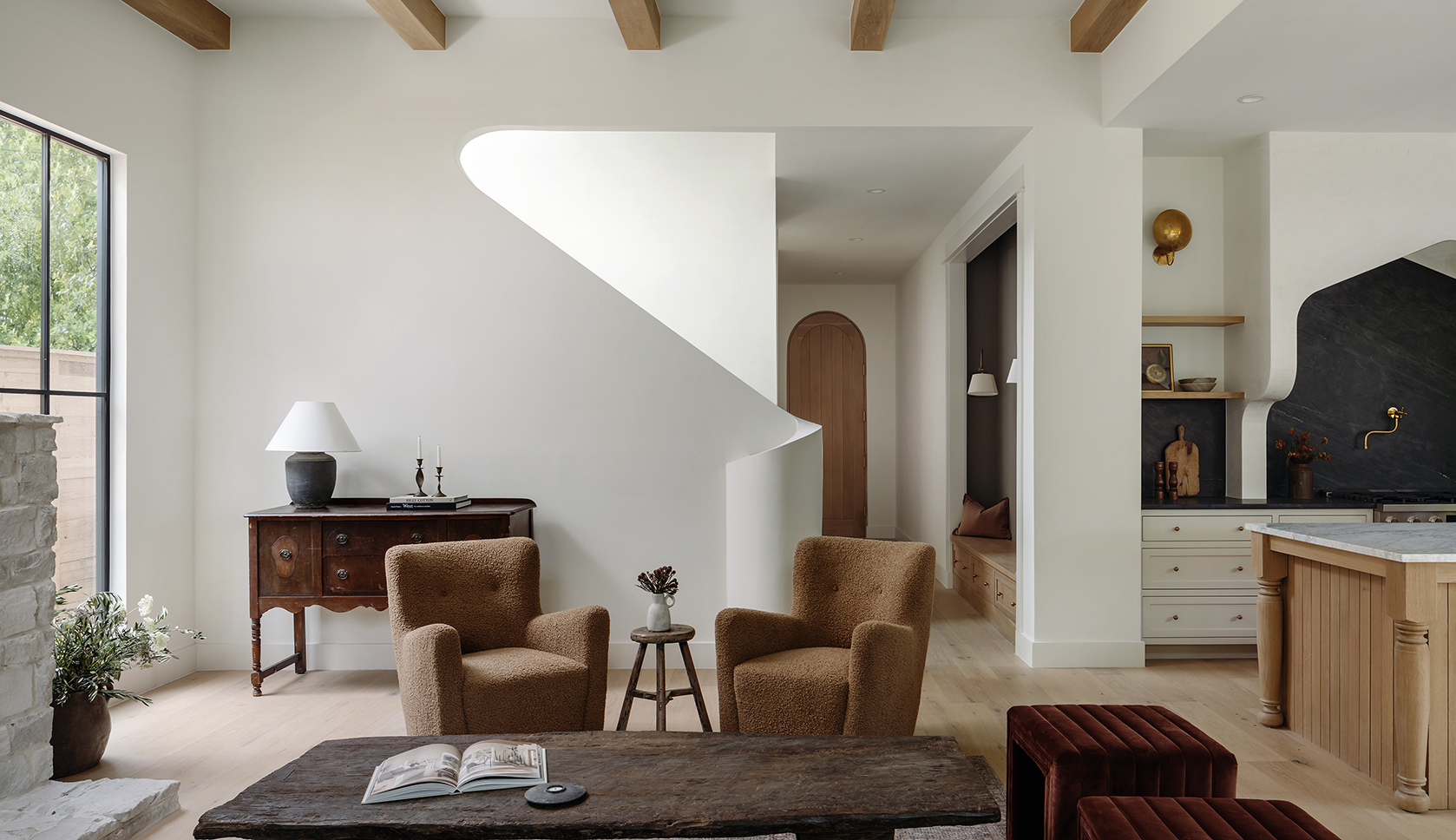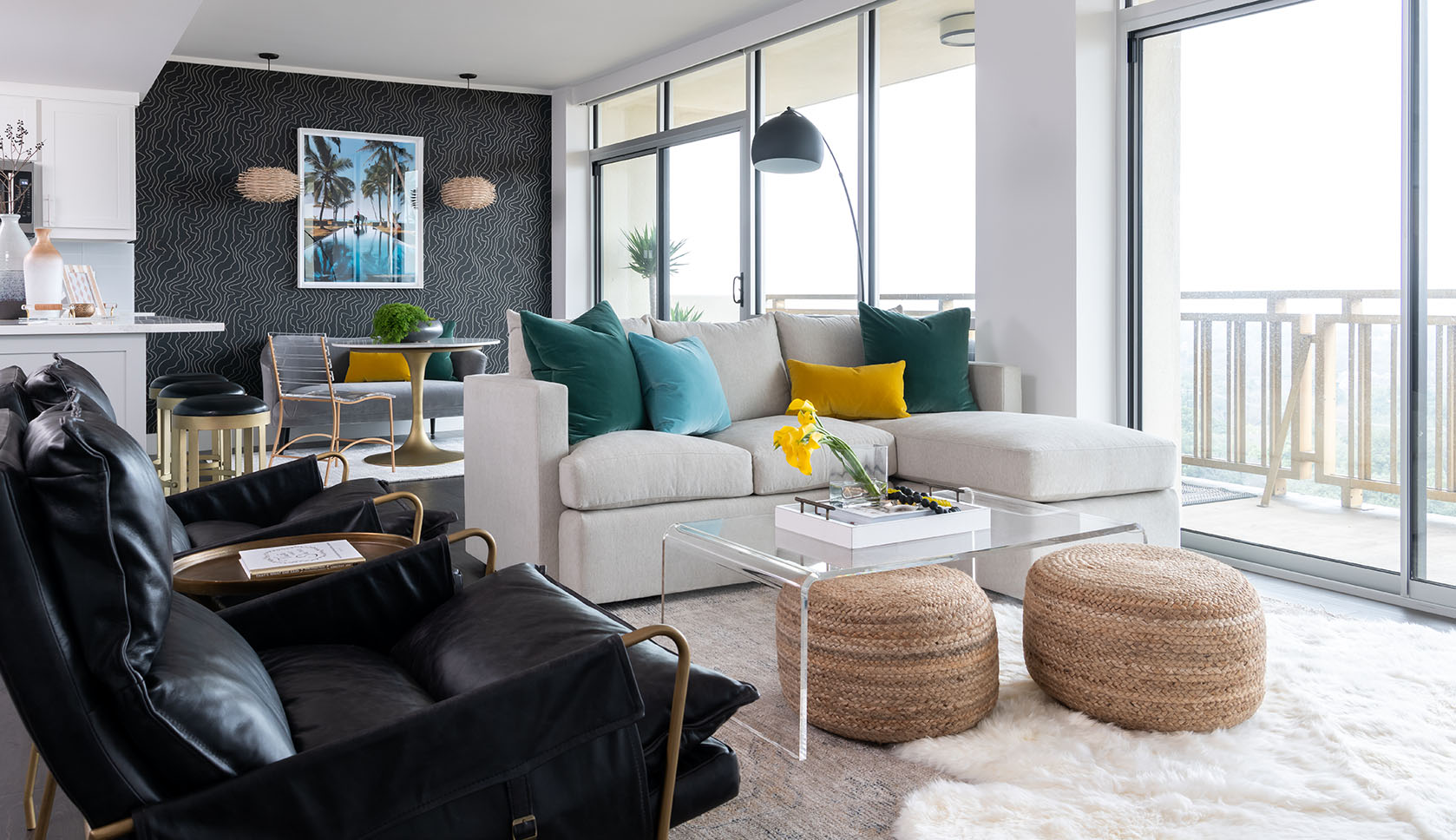For this Central Park West penthouse, Fauzia Khanani of Studio Fōr had the exciting task of designing it around a spectacular art collection. Over the years, her globe-trotting client had collected pieces by Richard Serra, Jeff Koons, Joan Miro, and Ellsworth Kelly. Though she lives full time in Washington, D.C., she was excited for her Manhattan home to be a living gallery, of sorts.
The landmark building, originally built in the 1920s and designed by renowned architect Emery Roth, overlooks the park. Simplicity would be key to allow the artwork and the views to take center stage. Khanani relied on minimalist design details, simple finishes, and custom wood millwork, with the occasional pop of color to mirror the vibrancy of the art collection. We had a chat with the architect to learn a bit more about this unique and artful home:
Hi Fauzia! We’d love to know a bit more about this penthouse. Where it it located, and what condition was it in at the start?
This project is in located in The Alden, a historic landmark residential building designed by Emery Roth and built in 1926. It sits along Central Park West overlooking the Park. Prior to our client purchasing the apartment, it was owned by a fashion icon and was decorated with many prints, patterns and textures in dark, rich tones. It was certainly tasteful and iconic in some ways but very different from the aesthetic of our client. Additionally, the public and private spaces spanned both floors of the duplex apartment.
What can you tell us about your client?
Our client is the former Vice President of Finance and Treasurer of the World Bank Group’s International Finance Corporation. She was the first woman to hold this position and spent much of her career around the world. Her must-have was to create a very modern, clean space with nods to Bauhaus design principles. She also wanted to extend the interior space of the apartment out to the terrace which overlooks Central Park. Consideration of natural light, natural materials and vibrant color were also things she desired in the space. Most importantly, her art collection was at the heart of the overall design layout and concept.
Since this was her second home, were you given any leeway or freedom with the design? Were there elements she might not have gone for in her primary residence?
This is an interesting question because the idea is that the apartment will eventually become her primary residence so there were certain aspects of her existing single family home in Washington, D.C. that she wanted replicated but was also open to novel ideas, such as the stone clad fireplace and chimney and the white oak and frosted glass staircase. One really fun aspect of the project was the built-in white oak shelving units in the living room which have a “Mandarin red” back panel, which was an ode to Asian culture and Feng Shui.
The client has an impressive art collection. How did you design around it, or ensure it would stand out?
During the initial stages of design when we were producing the first round of floor plan layouts, I actually took a trip down to D.C. to meet with the client at her home there. I wanted us to look at the plans at the same time as her art collection to decide where specific pieces would be located. This was a critical part of the design process and resulted in us shifting or resizing some walls to accommodate certain pieces of art. The living room millwork was also designed around a few specific paintings and sculptures.
Were there any risks that you feel especially paid off?
We decided to implement the Bauhaus-inspired curving concept throughout the apartment. It manifested in various locations and elements such as walls, ceilings, the stone fireplace and chimney and even the stair railing. The corners of the stone fireplace and chimney were quite challenging for our stone fabricator but they were amazingly able to bring our concept to fruition.
How long did the project take, start to finish?
We kicked off the design process in 2013 and it was finally finished and ready for move-in in 2017. There were a number of bumps along the way including receiving building and Landmark approvals as well as some major building infrastructure issues that were discovered during our demolition process and needed to be resolved before we could continue with construction. Luckily the client had another residence!




















